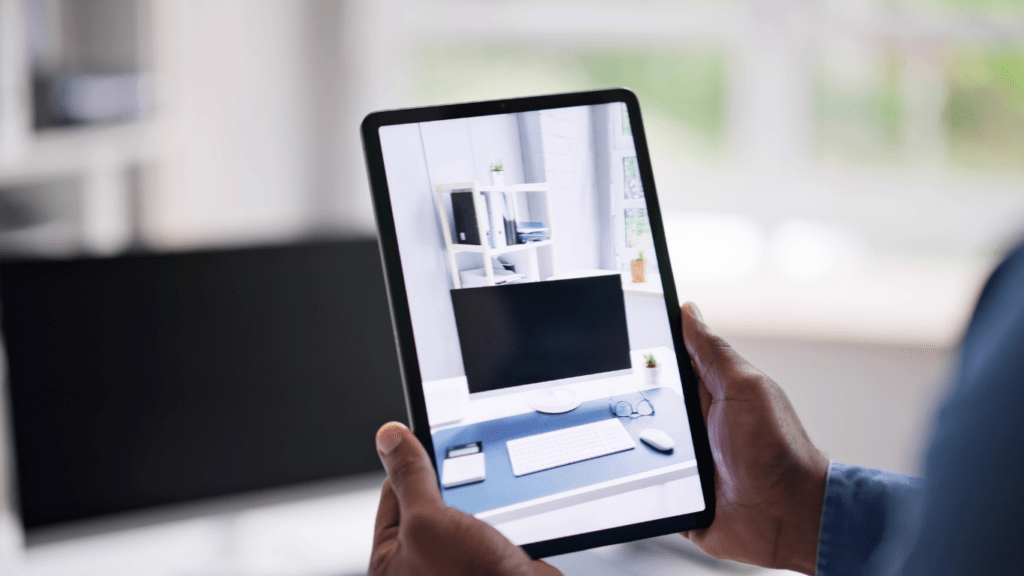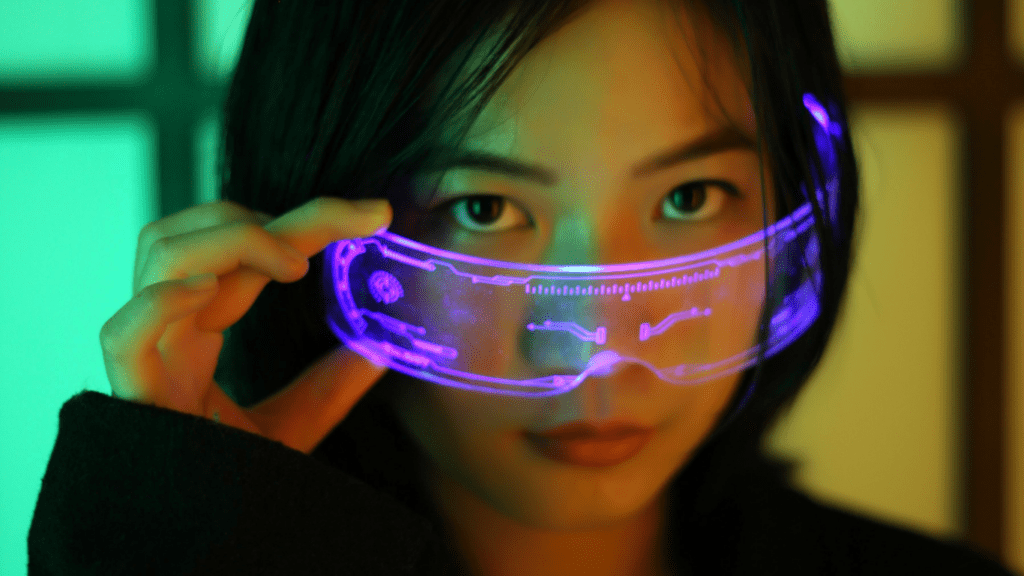Understanding Augmented Reality
Augmented Reality (AR) integrates digital content with the real world, creating enriched experiences. It overlays virtual elements onto physical surroundings through devices like smartphones and AR glasses.
What Is Augmented Reality?
AR combines real-world environments with computer-generated graphics, sounds, and other sensory information. Unlike Virtual Reality (VR), which immerses users in a completely virtual environment, AR enhances the existing physical space. Examples include apps that project virtual furniture into living spaces and filters adding digital effects to camera feeds.
Historical Development of AR
AR’s roots trace back to the 1960s. Ivan Sutherland developed the first AR head-mounted display system, called the “Sword of Damocles.” Advancements continued through the 1990s with the introduction of ARToolKit, an open-source library. In 2016, AR gained mainstream attention with Pokémon GO, a mobile game that successfully integrated AR into gameplay. Today, AR technologies span various industries, including:
- gaming
- healthcare
- retail
- education
Applications of AR in Marketing
Augmented Reality (AR) is revolutionizing how brands engage customers. In marketing, AR offers several innovative applications that elevate customer interaction.
- Enhancing Customer Experience
- AR transforms the customer experience by merging digital content with physical settings. Retail stores use AR apps to provide detailed product information when customers scan items. Museums enhance tours with AR-driven storytelling. Restaurants show interactive menus with AR overlays. Each application deepens engagement and improves satisfaction.
- Interactive Advertising Campaigns
AR makes advertising campaigns more engaging. Billboards come to life with AR content when scanned with a smartphone. QR codes in magazines reveal 3D animations or behind-the-scenes content. For example, Pepsi’s bus shelter campaign where users saw virtual tigers and spaceships through a screen. These campaigns don’t just capture attention—they create memorable experiences.
- Virtual Try-Ons
Virtual try-ons using AR change the way consumers shop for fashion and beauty products. Apps allow users to see how clothes look on them without trying them physically. Makeup brands offer AR features that let customers test different shades in real-time through their smartphones. This technology reduces return rates and boosts confidence in online purchases, enhancing overall satisfaction.
AR in marketing’s varied applications create immersive experiences that traditional methods can’t match.
Benefits of Augmented Reality in Interactive Marketing

Augmented Reality (AR) offers significant advantages in interactive marketing, providing innovative ways to connect with consumers. These benefits help brands create more engaging and personalized experiences.
Increased Engagement
AR significantly boosts user engagement by making interactions more immersive. For instance, AR-enabled apps allow customers to visualize products in their environment, like seeing how a couch fits in their living room. According to a report by Retail Perceptions, 61% of shoppers prefer retailers with AR experiences, showing its impact on consumer interest and interaction.
Personalization
Personalization becomes seamless with AR as it tailors experiences to individual preferences. Brands can offer customized product recommendations based on user behavior. For example, beauty brands use AR to create virtual try-ons, letting users see how different makeup products look on their skin. This level of customization not only enhances user satisfaction but also fosters brand loyalty.
Data Collection and Insights
AR provides valuable insights by collecting data on user interactions and preferences. This data helps brands understand customer behavior and improve marketing strategies. For instance, tracking how users interact with AR features can reveal popular products or areas needing improvement. Leveraging these insights, marketers can refine campaigns and target audiences more effectively.
Challenges and Limitations
While Augmented Reality (AR) offers numerous benefits, it’s essential to consider its challenges and limitations to understand its full scope.
Technical Barriers
AR depends on advanced technology, which can pose significant challenges. Devices must have robust processing power and high-resolution cameras for optimal performance. For instance, older smartphones might struggle with AR applications due to inadequate hardware capabilities. Software compatibility also remains an issue, with frequent updates required to maintain performance.
Cost Considerations
The development and implementation of AR can be expensive. Creating high-quality AR experiences necessitates skilled professionals, advanced software, and sometimes custom hardware. For example, developing an interactive AR app involves costs for 3D modeling, programming, and testing, which can deter smaller companies with limited budgets.
User Adoption
User adoption of AR faces hurdles related to awareness and usability. Many consumers are unfamiliar with AR or how to use it effectively. Additionally, there are concerns about privacy and data security, which can deter users from engaging with AR experiences. If users find AR applications cumbersome or invasive, they might resist adoption, limiting the technology’s reach and impact.
Case Studies and Success Stories
Examining real-world cases of augmented reality (AR) in marketing shows its potential and powerful impact. Let’s look at businesses leading the way and notable campaigns that have set benchmarks.
Businesses Leading the Way
Several companies have successfully integrated AR into their marketing strategies. IKEA, with its IKEA Place app, lets users virtually place furniture in their homes to see how items fit and look before purchasing. This tool revolutionizes the furniture shopping experience by merging digital and physical spaces.
Sephora offers another successful example with its Virtual Artist app. Users try different makeup products using their smartphone cameras. This AR experience increases user engagement, reduces product returns, and boosts online sales.
L’Oréal leverages AR for product trials through its ModiFace technology. Shoppers virtually try makeup and hair color products. This innovation enhances the customer experience, builds trust in online products, and decreases return rates.
Notable Campaigns
Nike’s AR campaign for the release of limited-edition sneakers stands out. During the NBA All-Star Weekend in 2018, Nike utilized AR to launch exclusive products. Customers unlocked special sneakers through the Nike SNKRS app, driving enthusiasm and urgency.
Another notable campaign is Pepsi’s “Unbelievable Bus Shelter.” Pepsi transformed a London bus shelter into an AR experience where users saw unexpected scenarios, like a tiger walking on the street or a spaceship landing. This campaign captured attention, created buzz, and reinforced Pepsi’s innovative brand image.
Gucci’s AR integration in its app allows users to try on sneakers virtually. By scanning their feet with a smartphone, users see how different shoe models look on them. This AR feature enhances online shopping by offering a realistic and engaging product trial experience.
These examples illustrate how AR transforms marketing, driving engagement, and enhancing customer experiences.
Future Trends in AR Marketing
Augmented Reality (AR) is poised to reshape the marketing landscape. Several emerging trends signal a future where AR becomes a core tool for brand engagement and consumer interaction.
Technological Advancements
AR technology continues to evolve rapidly. Enhanced processing power in smartphones and AR glasses allows for more complex and realistic graphics. Apple and Google are developing advanced AR platforms like ARKit and ARCore, enabling developers to create more sophisticated AR experiences with greater ease. 5G networks will further enhance AR applications with faster data transmission and reduced latency.
Recent improvements in AI and machine learning bolster AR’s capabilities, making it possible to deliver more personalized and interactive experiences. Object recognition and environmental mapping technologies improve, allowing AR applications to interact more seamlessly with the real world. For instance, AR shopping apps can now scan rooms and suggest furniture placements with high accuracy.
Industry Projections
Industry analysts predict substantial growth in AR marketing investments. According to Statista, the AR market size is expected to reach $198 billion by 2025, highlighting the potential for expansive adoption across various sectors. Retailers are anticipated to be major adopters, leveraging AR to create immersive shopping experiences that enhance online and in-store customer journeys.
Manufacturing and real estate sectors are also exploring heavy AR investments. In manufacturing, AR aids in real-time overlays of complex machinery instructions, which boosts efficiency. Real estate benefits from virtual property tours, allowing buyers to experience homes without physical visits, thus broadening market reach. With tech giants like Microsoft and Facebook investing in AR development, the future looks promising for this transformative technology in marketing.
AR marketing’s future trends reveal a landscape rich in opportunity. Technological advancements are making AR more accessible and effective, while industry projections indicate robust growth and adoption across various sectors. As AR becomes an integral part of marketing strategies, businesses will gain new ways to engage and delight consumers.



